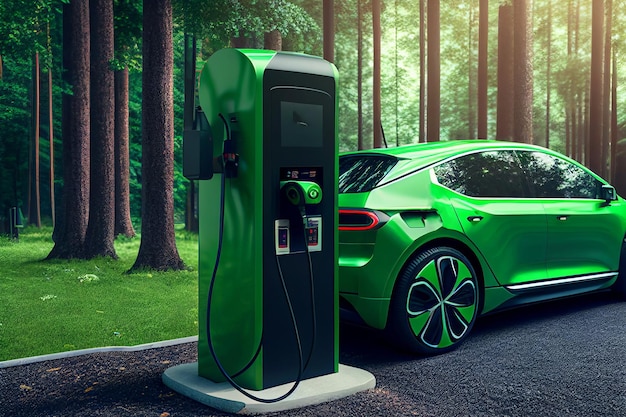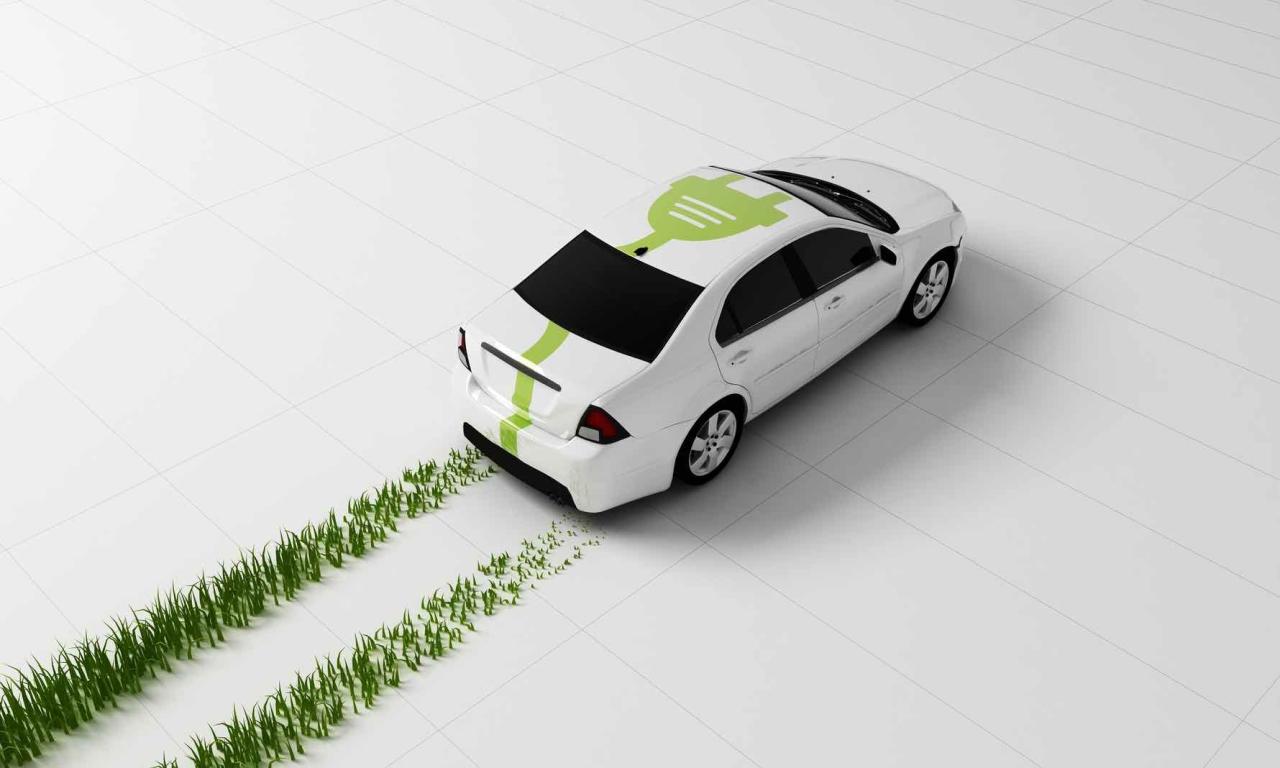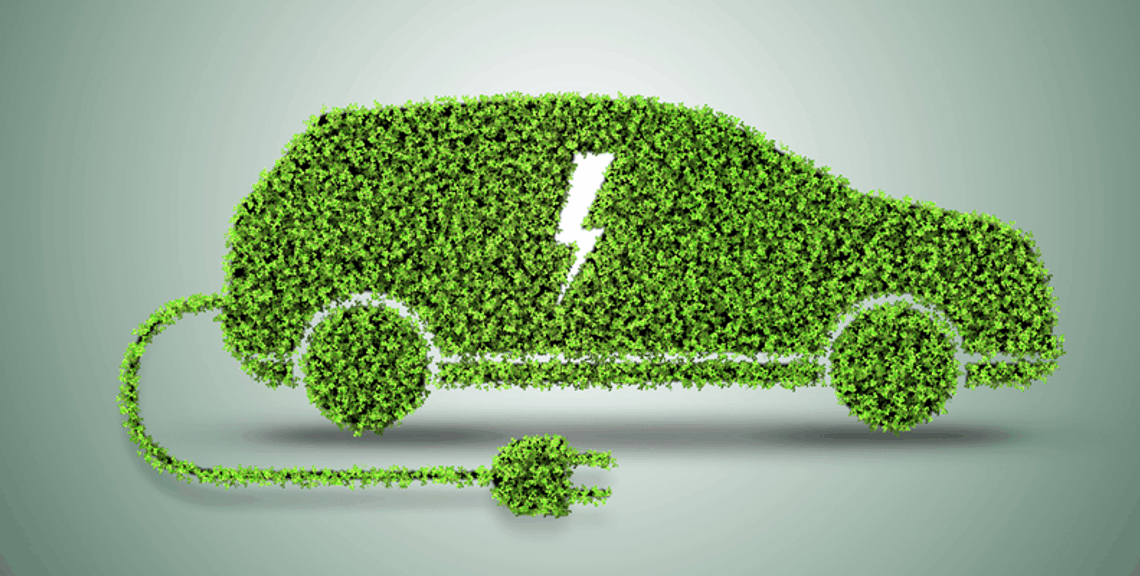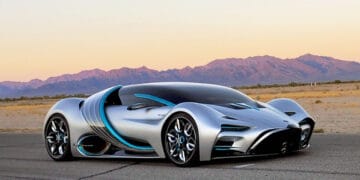The Greening of Our Roads

For more than a century, the internal combustion engine (ICE) has been the dominant force propelling global transportation, bringing unprecedented mobility but at a considerable environmental cost. The emissions from millions of gasoline and diesel-powered vehicles have been major contributors to air pollution, greenhouse gas concentrations, and climate change. Recognizing this urgent planetary imperative, the development and adoption of green vehicles have accelerated dramatically. These vehicles offer a compelling solution, promising not only cleaner air and reduced carbon footprints but also quieter urban environments and enhanced energy security.
The enthusiasm for green vehicles stems from a clear understanding of their benefits. For individuals, they often translate to lower running costs due to cheaper “fuel” (electricity or hydrogen) and reduced maintenance. For communities, they promise improved public health from cleaner air and a significant reduction in urban noise pollution. For nations, they offer a pathway to meeting ambitious climate targets, reducing reliance on volatile fossil fuel markets, and fostering a new era of clean energy innovation. This convergence of environmental urgency, economic viability, and technological advancement has positioned green vehicles at the forefront of a global sustainable revolution.
A. Defining Green Vehicles
The term “green vehicle” encompasses a diverse range of automotive technologies designed to minimize environmental impact compared to conventional gasoline or diesel cars. These include:
A. Battery Electric Vehicles (BEVs):
A. Principle: Powered solely by electric motors, drawing electricity from a large battery pack. They produce zero tailpipe emissions.
B. Benefits: Extremely quiet operation, instant torque delivery (leading to quick acceleration), significantly lower running costs (electricity is cheaper than gasoline), and reduced maintenance needs (fewer moving parts).
C. Innovations: Rapid advancements in battery energy density (longer range), faster charging capabilities, and decreasing battery costs are making BEVs increasingly competitive and accessible.
B. Plug-in Hybrid Electric Vehicles (PHEVs):
A. Principle: Combine an internal combustion engine with an electric motor and a larger battery pack than traditional hybrids. They can be plugged in to charge the battery.
B. Benefits: Offer a significant all-electric driving range (typically 20-50 miles or 30-80 km) for daily commutes, allowing for zero-emission travel. The gasoline engine provides flexibility for longer journeys when charging isn’t feasible, eliminating range anxiety.
C. Role: Act as a bridge technology, easing the transition for consumers hesitant to fully commit to BEVs.
C. Hybrid Electric Vehicles (HEVs):
A. Principle: Combine an ICE with an electric motor and a small battery. They cannot be plugged in; the battery is charged by the ICE and regenerative braking.
B. Benefits: Improve fuel efficiency and reduce emissions compared to conventional cars, especially in city driving where the electric motor can assist or power the vehicle at low speeds. No need for charging infrastructure.
C. Status: While an important step, HEVs are generally considered less “green” than BEVs or PHEVs due to their continued reliance on gasoline.
D. Fuel Cell Electric Vehicles (FCEVs):
A. Principle: Generate electricity onboard by converting hydrogen gas into water and electricity in a fuel cell stack. They produce zero tailpipe emissions, only water vapor.
B. Benefits: Quick refueling times (comparable to gasoline cars), long driving ranges, and zero emissions. Ideal for applications requiring rapid turnaround or heavy loads.
C. Challenges: Requires a robust hydrogen production and distribution infrastructure, which is currently limited globally. The cost of hydrogen production and vehicles remains high.
E. Other Green Technologies (Emerging/Niche):
A. Biofuel Vehicles: Cars running on fuels derived from biomass (e.g., ethanol, biodiesel), offering potentially lower net carbon emissions depending on feedstock and production methods.
B. Synthetic Fuels (eFuels): Artificially created fuels using captured CO2 and renewable hydrogen, allowing existing ICE vehicles to run with significantly reduced carbon footprints. Still in early development.
B. Environmental Impact
The primary and most significant impact of green vehicles is their profound positive effect on the environment:
A. Reduced Greenhouse Gas (GHG) Emissions:
A. Tailpipe Emissions: BEVs and FCEVs produce zero tailpipe emissions, directly eliminating carbon dioxide (CO2), nitrogen oxides (NOx), particulate matter (PM), and other harmful pollutants at the point of use.
B. Well-to-Wheel Emissions: While BEVs have upstream emissions from electricity generation, studies consistently show that, when considering the entire “well-to-wheel” lifecycle (from energy source to vehicle use), BEVs generally have a significantly lower carbon footprint than ICE vehicles, especially as electricity grids increasingly incorporate renewable energy sources.
C. Climate Change Mitigation: Reducing GHG emissions from transportation is critical for limiting global warming and mitigating the severe impacts of climate change.
B. Improved Air Quality:
A. Urban Centers: The elimination of tailpipe emissions in densely populated urban areas directly translates to cleaner air, reducing smog, fine particulate matter, and harmful gases that contribute to respiratory illnesses, heart disease, and premature deaths.
B. Public Health Benefits: Cleaner air leads to substantial public health benefits, reducing healthcare costs and improving overall quality of life for urban dwellers.
C. Reduced Noise Pollution:
A. Quieter Operations: Electric vehicles, in particular, operate almost silently at low speeds, significantly reducing urban noise pollution. This is a major benefit for residential areas, pedestrian zones, and overall urban tranquility.
B. Enhanced Urban Livability: Quieter cities contribute to a more pleasant living environment, reducing stress and improving quality of life.
D. Reduced Reliance on Fossil Fuels:
A. Energy Security: Shifting to electricity or hydrogen as primary transportation fuels reduces a nation’s dependence on finite and geopolitically sensitive fossil fuel imports.
B. Resource Depletion: Less reliance on oil contributes to conserving a finite natural resource.
E. Potential for Renewable Energy Integration:
A. Smart Charging: EVs can be charged during off-peak hours when electricity is cheaper and often supplied by renewable sources.
B. Vehicle-to-Grid (V2G): Emerging technology allows EVs to return excess electricity to the grid during peak demand, acting as distributed energy storage and stabilizing grids powered by intermittent renewables (solar, wind).
C. Economic Impact
The rise of green vehicles is not just an environmental imperative but also a significant economic driver, creating new industries and reshaping existing ones:
A. Job Creation:
A. Manufacturing: New jobs in battery manufacturing (gigafactories), electric motor production, and EV assembly lines.
B. Infrastructure: Significant job growth in the installation, maintenance, and operation of charging stations and hydrogen fueling infrastructure.
C. Research & Development: Increased demand for engineers, scientists, and software developers specializing in EV powertrains, battery chemistry, and autonomous driving.
B. Reduced Operating Costs for Consumers:
A. Lower Fuel Costs: Electricity is generally cheaper per mile/km than gasoline or diesel.
B. Lower Maintenance: EVs have fewer moving parts (no oil changes, spark plugs, complex transmissions, etc.), leading to significantly reduced maintenance costs and less frequent servicing.
C. Government Incentives: Purchase subsidies, tax credits, and non-financial perks (e.g., HOV lane access, preferential parking) reduce the total cost of ownership.
C. New Business Models:
A. Battery Recycling: A burgeoning industry focused on recycling valuable materials from spent EV batteries, creating a circular economy.
B. Charging Network Operators: Companies specializing in building, managing, and monetizing public and private charging networks.
C. Energy Management Services: Businesses offering smart charging solutions, V2G integration, and home energy management for EV owners.
D. Enhanced Energy Security:
A. Domestic Energy Sources: Countries can rely more on domestically produced electricity (including renewables) rather than imported oil, boosting national energy independence.
B. Price Stability: Electricity prices are generally less volatile than global oil prices.
E. Innovation and Competitiveness:
A. Technological Leadership: Nations and companies investing heavily in green vehicle technology gain a competitive edge in the global automotive market.
B. Economic Growth: The transition stimulates investment in R&D, manufacturing facilities, and related industries, fostering economic growth.
D. Challenges and Hurdles for Mass Adoption
Despite the overwhelming benefits, the widespread adoption of green vehicles faces several significant challenges that require concerted effort from governments, industry, and consumers:
A. Upfront Cost and Price Parity:
A. Higher Purchase Price: While battery costs are falling, many green vehicles (especially BEVs and FCEVs) still have a higher initial purchase price than comparable ICE vehicles, particularly in developing markets.
B. Affordable Options: There is a need for more genuinely affordable green vehicle options to appeal to a broader consumer base across all income levels.
B. Charging/Refueling Infrastructure:
A. Availability and Density: The number of public charging stations (especially fast chargers) and hydrogen fueling stations still needs to increase substantially to alleviate range and refueling anxiety, particularly in rural areas or in countries with nascent infrastructure.
B. Reliability: Issues with broken or non-functioning charging stations can deter potential buyers and reduce confidence in the network.
C. Standardization: Achieving universal standardization of charging plugs and payment systems across all regions would greatly enhance user convenience.
C. Range Anxiety and Performance in Extreme Climates:
A. Psychological Barrier: Despite increasing ranges, the psychological “range anxiety” (fear of running out of power) persists for some consumers, especially concerning long road trips.
B. Temperature Impact: Battery range can be significantly reduced in very cold temperatures, and extreme heat can also affect battery longevity and performance, posing challenges for users in varying climates.
D. Battery Raw Material Sourcing and Sustainability:
A. Ethical and Environmental Concerns: The extraction of critical battery raw materials like lithium, cobalt, and nickel can raise environmental concerns (e.g., water usage, pollution) and ethical issues (e.g., labor practices in mining).
B. Supply Chain Security: Ensuring a stable, diversified, and ethical supply chain for these materials is crucial as demand skyrockets.
C. Recycling Infrastructure: Developing robust and efficient battery recycling infrastructure is vital to recover valuable materials and minimize environmental impact at end-of-life.
E. Grid Capacity and Renewable Energy Integration:
A. Increased Electricity Demand: Widespread EV adoption will significantly increase demand on electricity grids, requiring substantial investment in generation, transmission, and distribution infrastructure.
B. Clean Energy Mix: The full environmental benefit of green vehicles is realized only when the electricity or hydrogen used to power them comes from renewable sources. Ensuring a rapidly decarbonizing energy mix is paramount.
F. Consumer Education and Awareness:
A. Misconceptions: Many consumers still hold misconceptions about green vehicle capabilities, charging times, maintenance, and overall cost of ownership.
B. Driving Experience: Educating consumers about the quiet, responsive, and often superior driving experience of green vehicles can help accelerate adoption.
E. Global Policy and Manufacturer Response

Governments and automotive manufacturers worldwide are responding to the green vehicle imperative with ambitious policies and aggressive product strategies:
A. Government Mandates and Targets:
A. ICE Ban Dates: Numerous countries and regions (e.g., Norway, UK, California, EU) have announced target dates for phasing out the sale of new ICE vehicles, pushing manufacturers towards electrification.
B. Zero-Emission Vehicle (ZEV) Mandates: Regulations requiring automakers to sell a certain percentage of ZEVs or face penalties.
C. Carbon Neutrality Goals: National and regional commitments to achieve carbon neutrality by specific dates, with transportation electrification being a key component.
B. Automaker Investments:
A. Billions in R&D: Major global automakers are investing hundreds of billions of dollars in EV research, development, and manufacturing.
B. Dedicated EV Platforms: Developing purpose-built electric vehicle platforms (e.g., VW’s MEB, GM’s Ultium) to optimize design, performance, and cost.
C. Battery Production: Investing directly in battery cell and pack manufacturing (gigafactories) or forming strategic partnerships with battery suppliers to secure supply.
D. Expanded EV Model Ranges: Rapidly expanding EV lineups to include a full range of vehicles: sedans, SUVs, pickups, vans, and commercial vehicles, catering to diverse consumer needs.
C. International Cooperation:
A. Global Standards: Collaborative efforts to develop international standards for charging infrastructure, battery safety, and vehicle performance to facilitate global adoption.
B. Research Partnerships: Cross-border research initiatives to accelerate breakthroughs in battery technology, hydrogen production, and sustainable manufacturing.
F. The Future Landscape
The journey of green vehicles is intertwined with broader future mobility trends, leading to an even more transformative landscape:
A. Vehicle-to-Grid (V2G) Integration: Green vehicles will increasingly become mobile energy storage units, feeding power back to the grid during peak demand, enhancing grid stability, and potentially providing revenue to owners.
B. Autonomous Electric Fleets: The convergence of electrification and autonomous driving will lead to fleets of shared, self-driving electric vehicles, revolutionizing ride-sharing, logistics, and public transportation.
C. Personalized Green Mobility: AI-driven platforms will offer personalized green mobility solutions, optimizing routes, suggesting charging points, and integrating various sustainable transport modes (e.g., e-bikes, public transit).
D. Sustainable Materials and Circular Economy: Increased use of recycled content, bio-based materials, and robust recycling programs for vehicle components, moving towards a truly circular automotive economy.
E. Smart Charging and Energy Management: Intelligent charging systems that optimize charging times based on grid demand, renewable energy availability, and electricity prices.
F. Air Mobility (eVTOLs): Electric Vertical Take-Off and Landing (eVTOL) aircraft could offer zero-emission air travel for urban and regional mobility, reducing ground congestion.
Conclusion
The impact of green vehicles extends far beyond their immediate environmental benefits; it encompasses a profound societal and economic transformation. By drastically reducing emissions, improving air quality, and mitigating climate change, these vehicles are paving the way for a healthier planet. Simultaneously, they are fueling economic growth, creating new industries and jobs, and offering consumers more affordable and convenient transportation options.
While significant challenges remain—from scaling charging infrastructure and ensuring ethical raw material sourcing to achieving widespread affordability—the momentum behind green vehicles is undeniable. Governments, industries, and individuals are increasingly aligned in their commitment to this sustainable future. As technology continues to evolve and infrastructure expands, green vehicles will not only revolutionize how we move but will also serve as a beacon of progress, demonstrating humanity’s capacity to innovate and adapt for a brighter, cleaner, and more sustainable tomorrow. The road ahead is electric, and it promises a healthier journey for all.














